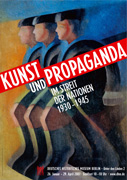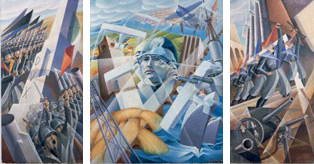


Introduction | Art and Politics | Images of the Heads of State | Images of the Individual and Society
Images of Work and Development | Images of War | A Difficult Heritage
By the early 1930s totalitarian regimes had come to power in many of the new European states that had emerged as fledgling democracies after the First World War. Mussolini’s Fascists ruled Italy, Stalin had imposed his totalitarian form of socialism on the Soviet Union, while Hitler and the National Socialists had turned Germany into a dictatorship.
The three totalitarian regimes made deliberate use of the fine arts and modern visual media for political agitation and to display their chosen public image. In fact, it was often artists themselves who created the imagery that allowed political ideas to be brought to the masses and made it possible to implement barbaric racist policies.
Public exhibitions were the most effective medium for staging political works of art.
Meanwhile in the United States, President Roosevelt’s democratic administration strove to stabilise the country politically and economically through interventionist government policies that included employment programmes for artists and state commissions for documentary photo campaigns and murals for public buildings. These works often served to promote Roosevelt’s policies.
This exhibition brings together contrasting works of propaganda art from the three totalitarian states and the democratic United States.

